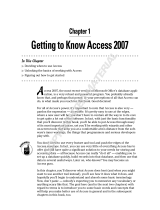
DPC/TRACK
Users Manual
ii
Creating Records......................................................................................... 2-13
Deleting Records......................................................................................... 2-17
Changing Data................................................................................................. 2-18
With Respect to Tag IDs and Serial Numbers................................................. 2-20
About the Interface.......................................................................................... 2-22
Main Menu.................................................................................................. 2-22
Tabs .......................................................................................................... 2-22
3 Searching for Records...................................................................... 3-1
Introduction ..................................................................................................... 3-3
Quick Search ................................................................................................... 3-3
Searching for Procedures ............................................................................ 3-6
Related Concepts ........................................................................................ 3-8
Wildcard Searching ......................................................................................... 3-9
Search Operators & Field Types................................................................. 3-10
Scalar Fields................................................................................................ 3-10
Arrayed Fields............................................................................................. 3-12
Data Order ....................................................................................................... 3-14
4 Graphs & Reports.............................................................................. 4-1
Introduction ..................................................................................................... 4-3
Generating Graphs........................................................................................... 4-3
Printing Reports............................................................................................... 4-5
Calibration Cert........................................................................................... 4-6
Test Detail................................................................................................... 4-6
Instrument Detail ........................................................................................ 4-6
Last Test Done ............................................................................................ 4-6
Test Equipment ........................................................................................... 4-6
Pass / Fail List............................................................................................. 4-6
Pass / Fail by Category ............................................................................... 4-6
Reverse Traceability ................................................................................... 4-7
Scheduler .................................................................................................... 4-7
Printing Records.............................................................................................. 4-8
Calibration Sheets ........................................................................................... 4-8
5 Testing................................................................................................ 5-1
Introduction ..................................................................................................... 5-3
Test Scheduling............................................................................................... 5-3
Scheduled Testing....................................................................................... 5-3
Unscheduled Testing................................................................................... 5-4
The Test Scheduler ..................................................................................... 5-5
The “Mark for Load” Concept.................................................................... 5-7
The Calibrator Manager .................................................................................. 5-8
Setup vs Test Procedure .................................................................................. 5-11





















